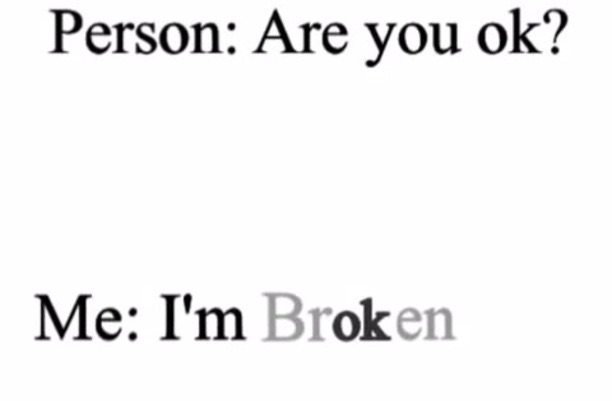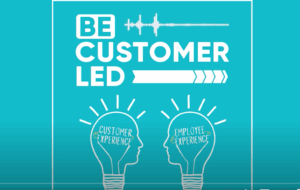
We didn’t lose our ability to focus or be creative, we were programmed away from it, toward a direction where our attention is heavily monetized. It’s by design.
The challenge is two fold. For those who remember life before smartphones and social media, memories serve as a benchmark for comparison. We tend to remember our analog lives and activities with a sense of nostalgia and also disbelief. After all, we’ve since learned to become digital-first in most things we do now. On the other hand, there’s an entire generation who were practically born online. Their pictures, while even in the womb, are proudly plastered all over the web without their consent or without consideration of the detailed, searchable history that will now follow them for the rest of their life. At the same time, they’re given tablets as toddlers and smartphones as gradeschoolers. These are the true digital-natives.
Either way, we all follow a similar path through digital. While incredible in its promise and capabilities, unforeseen but consequential effects are starting to materialize.
Our brains accelerate to keep up with the increasing array of real-time notifications.
We’re learning to expect regular interruption and distraction and we’re speeding up our minds in order to compensate. We now multi-task as a matter of practice. But as we do, we’re not really excelling in the same way we would if we focused on it individually. And, we’re expending an incredible amount of neurochemicals to switch between those tasks. It runs out quickly and affects our performance and state of mind and being every day.
As with cigarettes in the early days, we didn’t understand that our digital indulgences were made to be addictive, and we didn’t have information about the health effects—on our health and wellness. Your favorite apps, games and social networks are built using techniques called “persuasive design.” Persuasive technology is broadly defined as technology that is designed to change attitudes or … rhetoric, and human-computer interaction. The design of persuasive technologies can be seen as a particular case of design with intent.
“We use AI and neuroscience to increase your usage…make apps more persuasive…it’s not an accident. It’s a conscious design decision. We’re designing minds. The biggest tech companies in the world are always trying to figure out how to juice people.” – Dopamine Labs
In everyday cases, by design, multitasking and distractions make it harder to focus and harder to disconnect. It increases stress and anxiety, but we don’t fully realize it, because it’s normal. We are getting less essential sleep. Our empathy, depth and individual creativity are diminishing. Our self-esteem is eroding. More millennials are getting plastic surgery as a result of social media.
We can’t even sit still or walk without grossly consuming content on our devices. An astonishing 41% of us have had an accident relating to our smartphones. The number one increase in emergency room visits are pedestrian and vehicle-related accidents due to digital distractions.
I decided to do something about it. I’m not abandoning my devices. I’m not totally digital detoxing. I’m not taking a stance to decry technology and innovation. I’m not going to yell, “get off my lawn!” I am going to become more aware, mindful and intentional in my relationship with technology. I will chart a path where I control my course and outcomes and use my devices to help me to achieve my goals.
My good friend Joel Comm and I had a chance to sit down in San Diego recently to talk about how I learned, the hard way, the effects of technology in my life. I also shared how I got to the bottom of persuasive design, its impact on our health, wellness and creativity and how I found a way to an even better place than before.
I hope this short conversation helps you…
Perhaps you’ll consider joining me on this journey to Lifescale.
Brian Solis, Author, Speaker, Futurist
Brian Solis is principal analyst and futurist at Altimeter, the digital analyst group at Prophet, Brian is a world renowned keynote speaker and 8x best-selling author. In his new book, Lifescale: How to live a more creative, productive and happy life, Brian tackles the struggles of living in a world rife with constant digital distractions. His model for “Lifescaling” helps readers overcome the unforeseen consequences of living a digital life to break away from diversions, focus on what’s important, spark newfound creativity and unlock new possibilities. His previous book, X: The Experience When Business Meets Design, explores the future of brand and customer engagement through experience design.
Please, invite him to speak at your next event or bring him in to your organization to inspire colleagues, executives and boards of directors.
Follow Brian Solis!
Twitter: @briansolis
Facebook: TheBrianSolis
LinkedIn: BrianSolis
Instagram: BrianSolis
Pinterest: BrianSolis
Youtube: BrianSolisTV
Newsletter: Please Subscribe
Speaking Inquiries: Contact
____________________________
Follow Lifescale!
Main Newsletter: Please Subscribe
Coaches Newsletter: Please Subscribe
Twitter: @LifescaleU
Instagram: @LifescaleU
Facebook: Lifescale University





Leave a Reply